Table of Contents
Introduction – Scuppernong: The Sweet Grape Behind Southern Music’s Soul
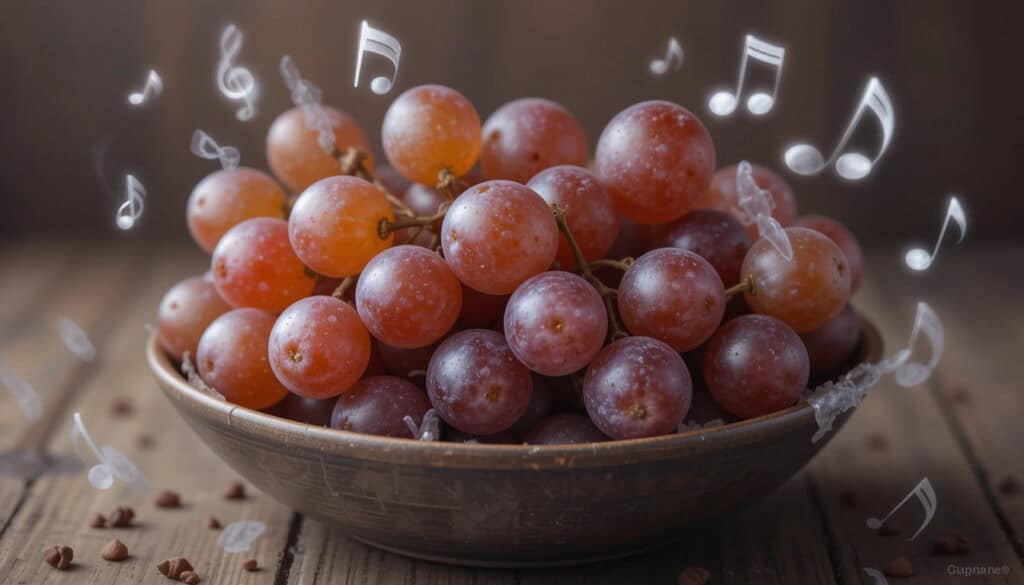
Deep in the American South, where humidity hangs thick and memories linger like morning mist, the Scuppernong grape tells stories older than recorded music itself. These bronze-colored treasures, dangling heavy from ancient vines, represent far more than simple sustenance. They embody the very essence of Southern landscapes, weaving themselves into the fabric of musical heritage that stretches back centuries.
The Scuppernong stands as a distinctive variety of muscadine grape, scientifically known as Vitis rotundifolia. Native to the southeastern United States, these grapes have witnessed the birth of blues, the evolution of folk melodies, and the development of musical traditions that would eventually shape American culture. Unlike their northern cousins, Scuppernong possesses a unique character that mirrors the region they call home—resilient, deeply rooted, and rich with complex flavors that evoke powerful memories.
Table 1: Scuppernong Grape Classification and Nutritional Profile
| Scientific Classification | Details |
|---|---|
| Scientific Name | Vitis rotundifolia ‘Scuppernong’ |
| Plant Family | Vitaceae |
| Common Names | Scuppernong, Bronze Muscadine |
| Native Region | Southeastern United States |
| Nutritional Components | Specific Elements (Abundance Level) |
|---|---|
| Vitamins | Vitamin C (copious), Vitamin B complex (trace), Riboflavin (copious) |
| Minerals | Manganese (copious), Potassium (copious), Trace minerals (trace) |
| Antioxidants | Resveratrol (copious), Polyphenols (copious) |
| Phytochemicals | Anthocyanins (trace), Flavonoids (copious) |
| Other Components | Dietary fiber (copious), Natural sugars (copious) |
The nutritional richness of Scuppernong mirrors their cultural significance. Scuppernong grapes contain abundant levels of heart-healthy resveratrol, particularly concentrated in their thick skins and seeds. The copious amounts of manganese support bone health, while the generous fiber content aided digestion for generations of Southern families. This natural abundance provided sustenance that fueled both body and spirit, creating the physical foundation for musical expression.
Table 2: Scuppernong vs. Other Grape Varieties Comparison
| Characteristic | Scuppernong | Common Grapes | Concord Grapes | Catawba Grapes | Pinot Noir |
|---|---|---|---|---|---|
| Skin Thickness | Very thick | Thin | Medium | Medium | Thin |
| Size | Large (1 inch diameter) | Small to medium | Medium | Medium | Small |
| Color | Bronze/green | Various | Dark purple | Pink/red | Dark purple |
| Flavor Profile | Sweet, musky | Mild sweet | Sweet, fruity | Sweet, floral | Complex, earthy |
| Growing Season | Late summer | Various | Late summer | Early fall | Fall |
| Climate Tolerance | High heat/humidity | Moderate | Cool climates | Cool climates | Cool climates |
| Cultural Significance | Deep Southern roots | Widespread | Northern states | Great Lakes region | European heritage |
1. Scuppernong Roots in Early Field Songs and Plantation Chants
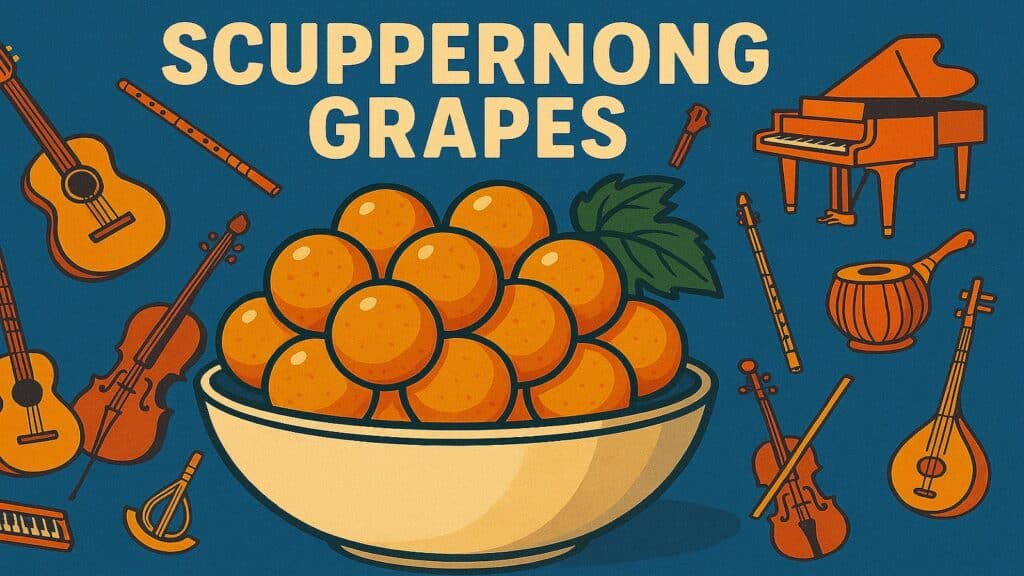
The morning sun cast long shadows across Southern plantations where Scuppernong vines created natural canopies over weathered fields. Beneath these leafy shelters, enslaved workers developed musical traditions that would become the foundation of American blues and folk music. The rhythm of agricultural labor, punctuated by the seasonal harvesting of these native grapes, provided both the tempo and the respite that shaped early work songs.
Field songs emerged from the practical need to coordinate group labor while providing emotional relief from harsh conditions. The timing of grape harvests, particularly the late summer Scuppernong season, marked crucial periods when musical traditions intensified. Workers would gather beneath the sprawling vines during brief rest periods, their voices carrying melodies that blended African musical heritage with the new realities of Southern agricultural life.
The acoustic properties of grape arbors created natural amphitheaters where voices could resonate and blend. These vine-covered spaces became informal gathering places where musical knowledge passed between generations. The seasonal nature of grape cultivation meant that workers from different plantations would sometimes come together during harvest time, facilitating the cross-pollination of musical styles and techniques.
Table 3: Musical Elements in Plantation Work Songs
| Musical Component | Characteristics | Connection to Grape Culture |
|---|---|---|
| Call and Response | Leader calls, group responds | Coordinated grape picking rhythm |
| Repetitive Refrains | Simple, memorable phrases | Easy to remember during repetitive tasks |
| Syncopated Rhythms | Off-beat emphasis | Matched natural picking motions |
| Pentatonic Scales | Five-note musical patterns | African heritage preserved in New World |
| Improvisation | Spontaneous lyrical creation | Stories of daily life and seasonal changes |
| Work Tempo | Matched to physical labor pace | Grape harvesting speed and efficiency |
The presence of Scuppernong vines on plantations provided more than agricultural value. These native plants connected workers to the land in ways that cultivated crops could not. The grapes represented something indigenous and wild, untamed by human control. This symbolic relationship found expression in musical themes of freedom, natural beauty, and connection to place that would later influence blues and folk traditions.
2. Scuppernong and Sensory Memory in Blues Lyrics
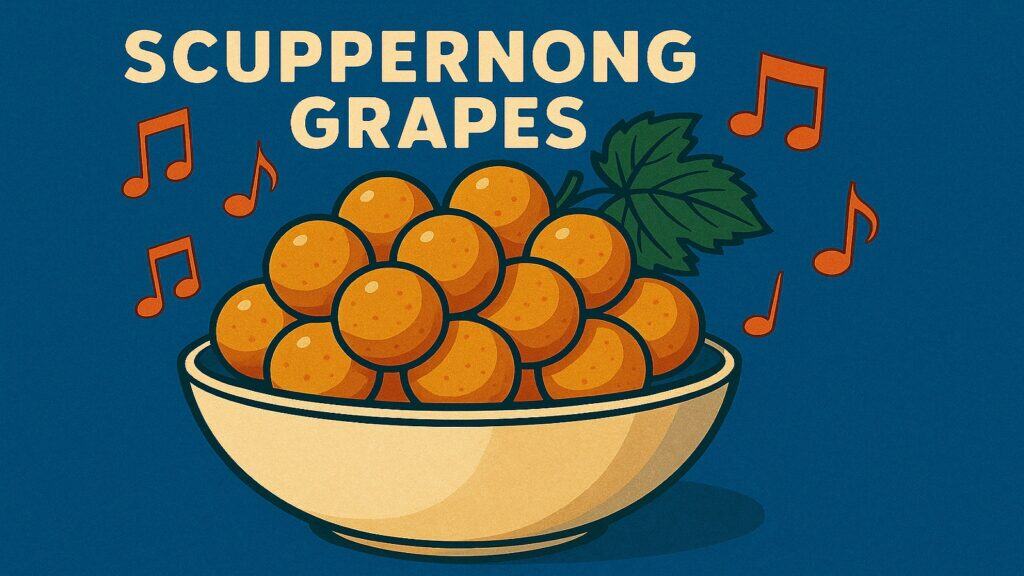
The human brain processes scent and taste through pathways closely connected to memory and emotion, a phenomenon that scientists call the Proustian Memory Effect. This neurological reality explains why certain flavors and aromas can instantly transport individuals across decades, triggering vivid recollections of specific moments, places, and feelings. For generations of Southern musicians, the distinctive taste and fragrance of Scuppernong grapes became powerful triggers for emotional memories that found expression in blues lyrics and melodies.
Scuppernong grapes possess a unique sensory profile that distinguishes them from other varieties. Their musky sweetness, combined with floral undertones and earthy finish, creates a flavor experience that lingers in memory long after consumption. The thick skin releases oils when broken, producing an aroma that can be detected from considerable distances. These sensory characteristics made Scuppernong grapes particularly effective as memory anchors, linking specific emotional states to particular times and places.
Delta blues musicians often referenced seasonal foods and natural phenomena in their lyrics, using these familiar elements to convey complex emotions and experiences. The maturation of Scuppernong in late summer aligned with the conclusion of the growing seasons, marking a period of both harvest festivities and reflection on the impending challenges of winter. This temporal association imbued the grapes with bittersweet symbolism that resonated with blues themes of joy tinged with sorrow.
Table 4: Sensory Memory and Musical Expression in Blues
| Sensory Element | Scuppernong Characteristics | Musical Expression |
|---|---|---|
| Taste Memory | Sweet with musky undertones | Bittersweet lyrical themes |
| Scent Triggers | Floral and earthy aromas | Nostalgic melodic phrases |
| Texture Recall | Thick skin, juicy interior | Contrasts between harsh and gentle musical elements |
| Visual Memory | Bronze color, hanging clusters | Imagery of abundance and ripeness |
| Seasonal Association | Late summer ripening | End-of-season blues themes |
| Geographic Connection | Native Southern landscapes | Place-based identity in lyrics |
The Proustian Memory Effect operates through the olfactory bulb’s direct connection to the limbic system, the brain region responsible for emotion and memory formation. This biological mechanism explains why smell and taste memories remain particularly vivid and emotionally charged throughout life. For blues musicians who had experienced childhood summers filled with Scuppernong harvests, the sensory memory of these grapes could instantly recall the full emotional context of those experiences.
Musical researchers have noted how blues lyrics often incorporate specific sensory details that serve as emotional shorthand for complex feelings and experiences. References to particular foods, seasonal phenomena, and natural elements function as coded language that communicates shared cultural experiences. Within this tradition, Scuppernong grapes represented not just sustenance, but connection to place, season, and community memory.
3. Scuppernong Trails and Traveling Musicians in the Rural South
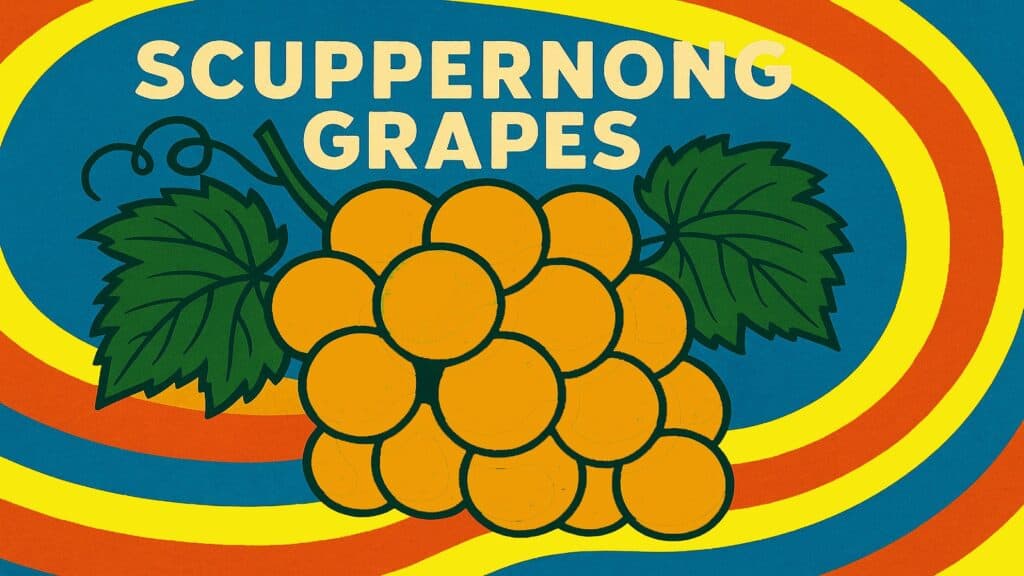
The rural South of the late nineteenth and early twentieth centuries was crisscrossed by informal networks of roads, paths, and waterways that connected isolated communities. Along these routes, Scuppernong vines grew wild and cultivated, marking the landscape with seasonal abundance that provided sustenance for traveling musicians. These grape-growing regions served as acoustic crossroads where different musical traditions converged, evolved, and spread throughout the region.
Traveling musicians—including song collectors, fiddlers, banjo players, and early blues performers—relied on the hospitality of rural communities for food, shelter, and audiences. The presence of Scuppernong vineyards often indicated established settlements with sufficient stability to support both agriculture and cultural activities. These communities became stopping points on informal circuits that facilitated the exchange of musical ideas and techniques.
The seasonal nature of grape cultivation created natural rhythms that influenced musical touring patterns. Late summer brought harvest festivals and community gatherings that provided performance opportunities for traveling musicians. The abundance of free food during grape season allowed musicians to extend their stays in particular communities, deepening their exposure to local musical traditions and contributing their own influences to the regional sound.
Table 5: Musical Exchange Routes in Scuppernong-Growing Regions
| Geographic Region | Musical Traditions | Scuppernong Significance | Notable Characteristics |
|---|---|---|---|
| Piedmont Region | Piedmont blues, ragtime | Wild vine abundance | Fingerpicking guitar styles |
| Appalachian Foothills | Fiddle tunes, ballads | Cultivated varieties | Mountain string band music |
| Delta Areas | Delta blues, work songs | Plantation cultivation | Slide guitar techniques |
| Coastal Plains | Sea shanties, folk songs | Native vine habitats | Call and response patterns |
| River Valleys | Riverboat songs, spirituals | Transportation corridors | Rhythmic rowing patterns |
| Hill Country | Sacred harp, gospel | Church community grapes | Harmony singing traditions |
The acoustic properties of areas with dense Scuppernong cultivation influenced the development of regional musical styles. Vine-covered landscapes absorbed certain sound frequencies while amplifying others, creating natural acoustics that favored particular vocal techniques and instrumental approaches. Musicians who spent extended periods in these environments unconsciously adapted their performance styles to take advantage of these acoustic characteristics.
Documentation from the period reveals that many traveling musicians carried small instruments that could be easily transported along rural routes. The guitar, fiddle, banjo, and harmonica became standard tools of itinerant performers, chosen partly for their portability and partly for their ability to provide both melody and rhythm. These instruments proved particularly effective in the acoustic environments created by Scuppernong-rich landscapes.
4. Scuppernong Porch Culture and the Rise of Folk Melodies
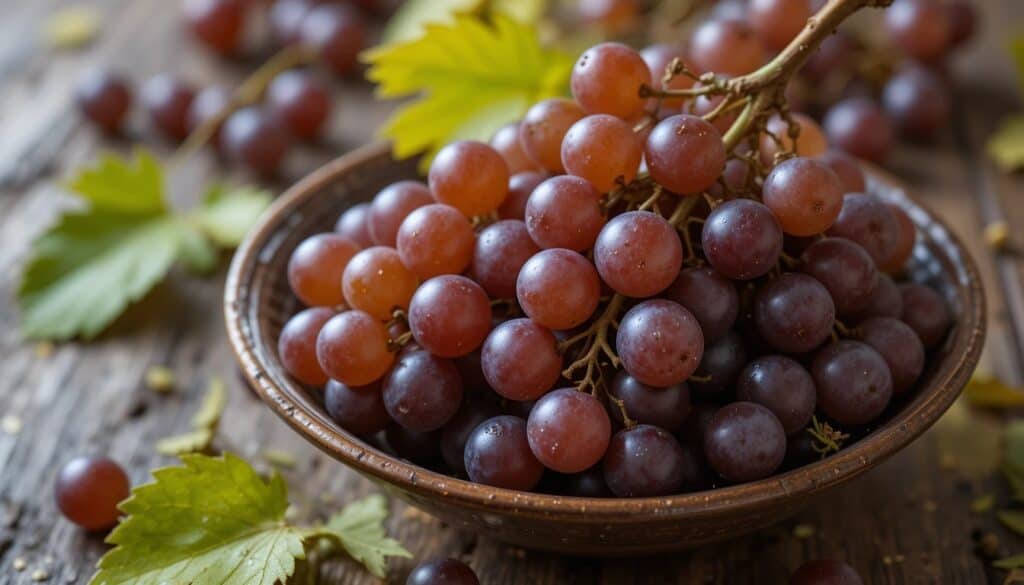
Southern porch culture represented a unique social institution that fostered the development and preservation of folk musical traditions. Scuppernong vines, with their vigorous growth and attractive foliage, frequently adorned these outdoor gathering spaces, creating natural canopies that provided shade and privacy. Under these leafy shelters, families and neighbors gathered during warm evenings to share stories, news, and music that had been passed down through generations.
The physical structure of Southern porches, enhanced by Scuppernong vine coverage, created intimate acoustic environments that favored quiet conversation and gentle musical expression. The natural sound dampening provided by dense foliage encouraged softer singing and delicate instrumental work, influencing the development of folk melodies that emphasized subtlety over volume. These acoustic conditions fostered musical styles that relied on intricate finger work, close harmony, and narrative clarity.
Porch gatherings followed seasonal rhythms that coincided with agricultural cycles and natural phenomena. The ripening of Scuppernong grapes in late summer marked a particularly active period for social music-making, as the harvest season brought both leisure time and celebratory spirit. These gatherings provided crucial opportunities for musical knowledge transfer between generations, ensuring the survival of traditional melodies and techniques.
Table 6: Porch Culture and Folk Music Development
| Social Function | Musical Elements | Scuppernong Role | Cultural Impact |
|---|---|---|---|
| Family Gatherings | Lullabies, children’s songs | Seasonal celebration | Intergenerational transmission |
| Neighbor Visits | Story songs, ballads | Shared harvest experiences | Community bonding |
| Courtship Rituals | Love songs, serenades | Romantic seasonal setting | Cultural continuity |
| News Sharing | Topical songs, commentary | Current events discussion | Social cohesion |
| Religious Observance | Hymns, spirituals | Thanksgiving for harvest | Spiritual expression |
| Skill Teaching | Instrumental instruction | Multigenerational learning | Musical preservation |
The intimacy of porch gatherings encouraged the development of highly personal musical expression. Unlike public performances that required projection and showmanship, porch music emphasized emotional authenticity and subtle communication. This environment nurtured the growth of folk melodies that conveyed complex feelings through simple, memorable structures that could be easily learned and passed along.
Ethnomusicologists have observed that porch culture has maintained musical traditions that could have otherwise been lost due to urbanization and modernization. The consistent presence of Scuppernong vines on Southern porches created visual and aromatic cues that triggered musical memories and encouraged the repetition of traditional songs. These natural memory aids helped maintain cultural continuity across generations of social and economic change.
5. Scuppernong Symbolism in Southern Storytelling Ballads
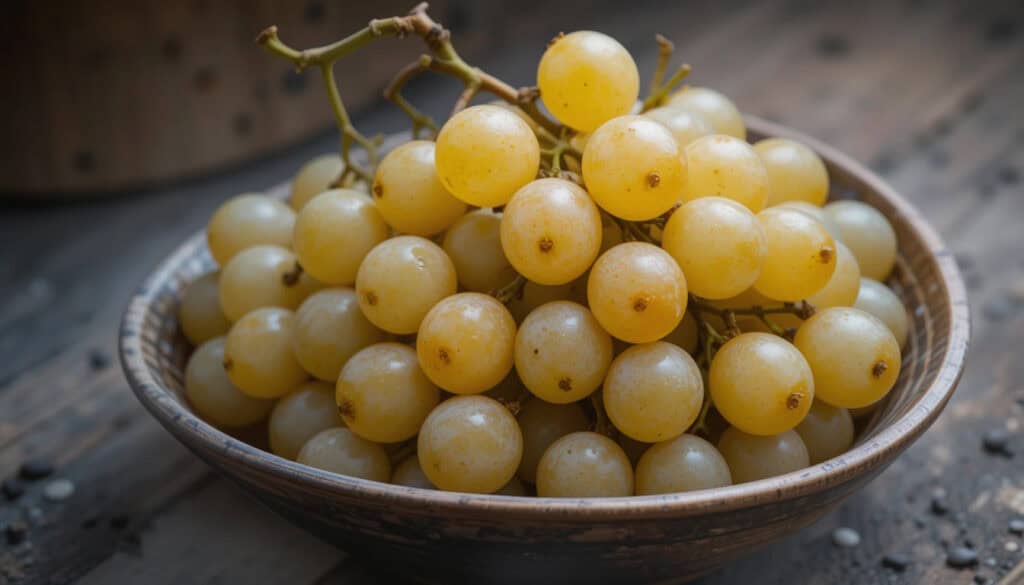
The Semiotic Triangle, developed by Ogden and Richards, provides a framework for understanding how symbols acquire meaning through the relationship between sign, referent, and thought. In Southern storytelling ballads, Scuppernong grapes functioned as powerful symbols that connected specific imagery with deep cultural meanings related to comfort, ancestry, and regional identity. This symbolic relationship allowed musicians to communicate complex ideas about belonging, memory, and cultural heritage through simple references to familiar natural phenomena.
Scuppernong grapes carried multiple layers of symbolic meaning within Southern culture. Their status as native plants connected them to themes of authenticity and belonging that resonated with communities seeking to establish distinct regional identity. The seasonal nature of grape ripening provided natural metaphors for human life cycles, while their sweetness suggested comfort and abundance even during difficult times.
The symbolic power of Scuppernong in storytelling ballads derived partly from their unique position as wild abundance in a landscape shaped by human labor. Unlike cultivated crops that required constant attention, Scuppernong vines thrived with minimal intervention, representing natural prosperity and the possibility of ease within a culture defined by hard work. This symbolic association made them particularly effective as metaphors for hope and resilience.
Table 7: Symbolic Meanings of Scuppernong in Southern Ballads
| Symbol | Referent | Cultural Meaning | Musical Expression |
|---|---|---|---|
| Sweet Taste | Comfort, pleasure | Relief from hardship | Major key resolutions |
| Wild Growth | Freedom, authenticity | Resistance to control | Improvisational passages |
| Seasonal Ripening | Life cycles, timing | Natural rhythms | Cyclical song structures |
| Native Status | Belonging, heritage | Regional identity | Traditional melodies |
| Vine Abundance | Prosperity, sharing | Community wealth | Call and response patterns |
| Bronze Color | Maturity, richness | Wisdom and experience | Complex harmonies |
The use of Scuppernong symbolism in ballads allowed storytellers to embed multiple meanings within single references, creating layers of interpretation that could speak to different audiences simultaneously. Surface meanings accessible to casual listeners coexisted with deeper symbolic content that resonated with those familiar with cultural codes and references. This multi-layered communication enhanced the effectiveness of oral tradition in preserving and transmitting cultural knowledge.
Ballad scholars have identified how natural symbols like Scuppernong grapes served as mnemonic devices that aided in the memorization and performance of long narrative songs. The visual and sensory associations connected to grape imagery provided memory anchors that helped performers recall complex story sequences and emotional progressions. These symbolic shortcuts made possible the preservation of elaborate musical narratives across generations of oral transmission.
6. Scuppernong and String Instruments: Picking, Plucking, and Pacing
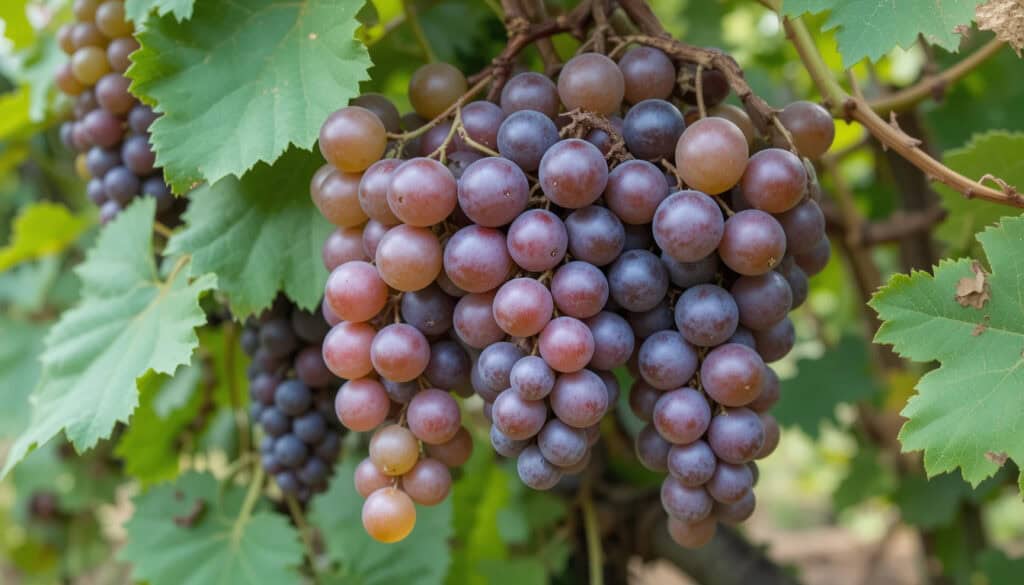
The physical motions required for harvesting Scuppernong grapes share surprising similarities with the techniques used to play traditional Southern string instruments. Both activities involve precise finger movements, careful timing, and sustained concentration that creates natural rhythmic patterns. These parallels between agricultural labor and musical technique created unconscious connections that influenced the development of distinctive playing styles in Southern musical traditions.
Scuppernong harvesting requires a specific technique that differs from other grape varieties due to their thick skins and individual cluster structure. Each grape must be plucked individually rather than harvested in bunches, creating a repetitive motion that emphasizes finger dexterity and consistent pacing. This picking rhythm, performed by groups of workers moving through vineyards, generated natural polyrhythmic patterns that found expression in string band music.
The acoustic environment of grape harvesting also influenced musical development. The sound of individual grapes dropping into containers created percussive rhythms that served as natural metronomes for work songs and field hollers. These agricultural soundscapes provided rhythmic templates that musicians later incorporated into their instrumental techniques and compositional approaches.
Table 8: Grape Picking Motions and String Instrument Techniques
| Physical Motion | Grape Harvesting | Guitar Technique | Banjo Application | Fiddle Correlation |
|---|---|---|---|---|
| Finger Picking | Individual grape selection | Fingerpicking patterns | Clawhammer style | Left hand fingering |
| Rhythmic Pacing | Consistent harvest speed | Steady bass lines | Roll patterns | Bowing rhythm |
| Hand Coordination | Both hands working | Melody and bass | Frailing motion | Bow and finger coordination |
| Muscle Memory | Repetitive motions | Automatic fingering | Pattern repetition | Intonation accuracy |
| Sustained Focus | Long harvest sessions | Extended playing | Endurance techniques | Concentration maintenance |
| Pattern Recognition | Vine navigation | Chord progressions | Picking sequences | Scale passages |
The seasonal timing of Scuppernong harvests coincided with periods when agricultural communities had both leisure time and celebratory inclination for music-making. The completion of grape harvesting marked important social milestones that called for musical celebration, creating natural connections between the physical experience of picking and the cultural expression of playing. These temporal associations reinforced the unconscious links between harvesting motions and musical techniques.
Musicians who grew up participating in Scuppernong harvests developed finger strength, dexterity, and rhythmic sense through agricultural labor that directly translated to improved instrumental ability. The repetitive nature of grape picking created muscle memory and coordination that enhanced musical performance, while the communal aspects of harvest work fostered the collaborative skills essential for ensemble playing.
7. Scuppernong’s Role in Rural Music Festivals and Local Soundscapes
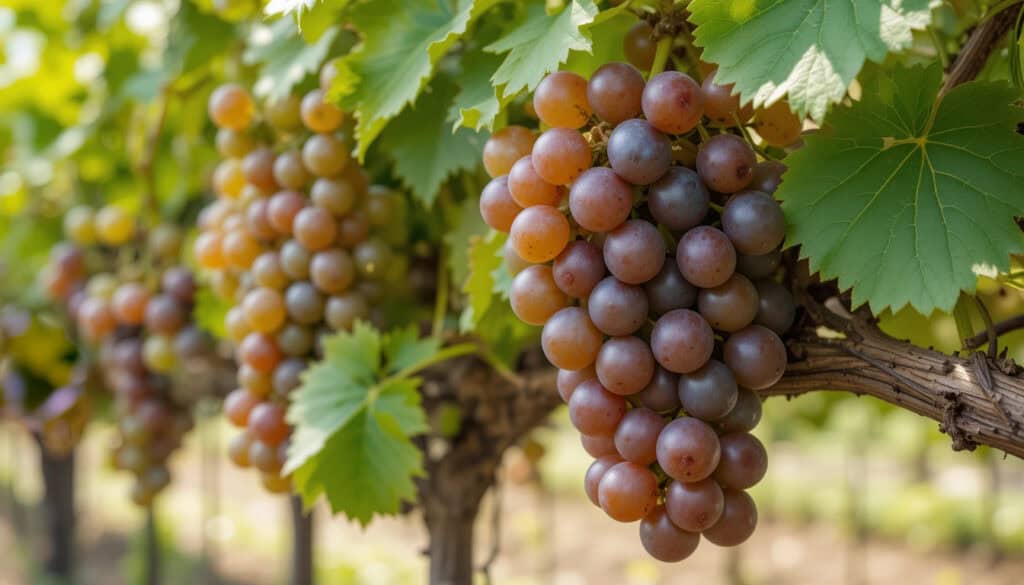
The agricultural calendar of the rural South created natural rhythms that shaped community cultural activities and musical celebrations. Scuppernong grape harvests, occurring in late summer, coincided with the end of major growing seasons and the beginning of social periods when communities gathered to celebrate successful harvests and prepare for winter months. These seasonal festivals became crucial incubators for musical development, providing performance opportunities and cultural exchange that enriched regional musical traditions.
Rural music festivals typically aligned with agricultural milestones, transforming practical community gatherings into celebrations that combined work, worship, and entertainment. Scuppernong harvests provided both the occasion and the sustenance for these events, as abundant grape crops supplied food and drink that could support extended celebrations. The natural abundance of late summer created economic conditions that allowed communities to invest time and resources in cultural activities.
The acoustic properties of outdoor festival environments, often enhanced by natural grape arbors and vine-covered structures, created unique soundscapes that influenced musical performance and development. These spaces favored certain instruments and vocal techniques while presenting challenges that encouraged musical innovation and adaptation. The resulting sound characteristics became associated with particular regional styles and performance traditions.
Table 9: Seasonal Festival Impact on Musical Development
| Festival Element | Scuppernong Connection | Musical Influence | Cultural Significance |
|---|---|---|---|
| Harvest Timing | Late summer abundance | End-of-season themes | Community celebration |
| Food Provision | Free grape sustenance | Extended event duration | Cultural investment opportunity |
| Natural Venues | Vine-covered gathering spaces | Acoustic environment shaping | Regional sound development |
| Community Gathering | Shared agricultural experience | Musical collaboration | Social cohesion |
| Seasonal Transition | Preparation for winter | Reflective musical themes | Cultural memory preservation |
| Economic Relief | Successful harvest celebration | Resource allocation for arts | Cultural priority establishment |
The documentation of rural festivals reveals how Scuppernong abundance influenced the structure and content of musical celebrations. Communities with successful grape harvests could support longer festivals with more diverse programming, creating opportunities for musical experimentation and cross-cultural exchange. These extended celebrations provided crucial developmental environments for emerging musical forms and performance techniques.
Festival environments also facilitated the documentation and preservation of musical traditions that might otherwise have remained isolated within individual communities. The convergence of musicians from different areas during harvest celebrations created opportunities for comparison, learning, and synthesis that advanced the development of regional musical styles. These cultural exchanges, enabled by Scuppernong abundance, contributed to the rich diversity of Southern musical traditions.
8. Scuppernong Grape’s Influence on Sonic Identity and Accent in Southern Tunes
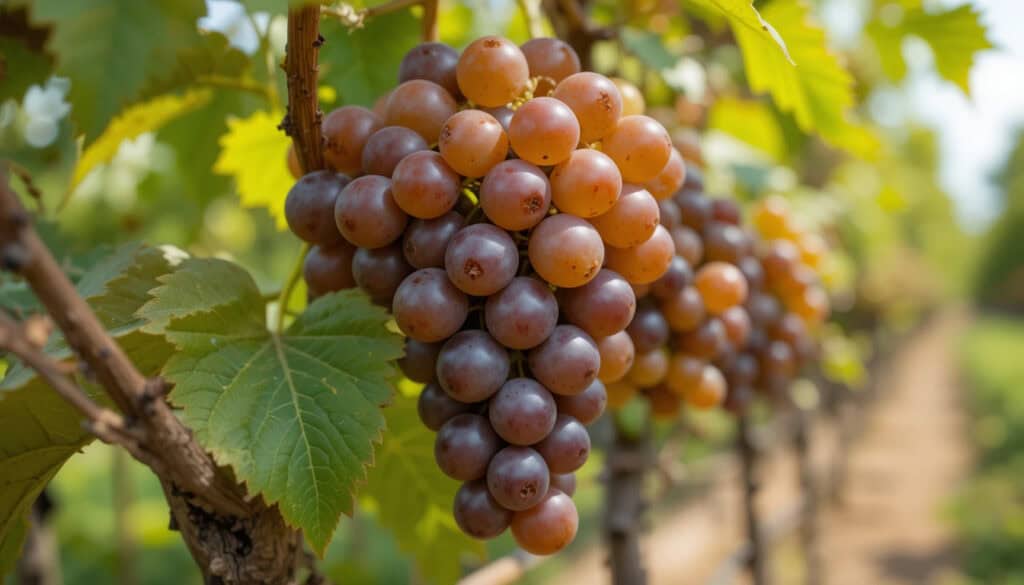
Environmental Acoustics theory examines how physical landscapes shape sound transmission and influence the development of regional musical characteristics. The dense vine coverage and specific topographical features associated with Scuppernong cultivation created acoustic environments that favored certain vocal techniques and instrumental approaches, contributing to the distinctive sonic identity of Southern musical traditions.
Scuppernong vines, with their broad leaves and thick growth patterns, create natural sound dampening that affects both sound projection and resonance characteristics. These acoustic properties influenced the development of vocal techniques that emphasized tonal warmth and intimate delivery rather than powerful projection. The resulting vocal styles became characteristic features of Southern musical expression, contributing to regional identity and cultural distinctiveness.
The seasonal changes in Scuppernong vine coverage created varying acoustic conditions throughout the year, encouraging musical adaptability and influencing the development of diverse performance approaches. Musicians performing in these environments learned to adjust their techniques according to acoustic conditions, developing sensitivity to environmental factors that enhanced their overall musical sophistication.
Table 10: Environmental Acoustics and Musical Development
| Acoustic Factor | Scuppernong Environment | Vocal Adaptation | Instrumental Response |
|---|---|---|---|
| Sound Dampening | Dense vine coverage | Intimate delivery style | Softer playing techniques |
| Resonance Control | Natural sound absorption | Tonal warmth emphasis | Reduced volume dynamics |
| Frequency Response | Filtered sound transmission | Mid-range vocal focus | Balanced instrumental timbre |
| Seasonal Variation | Changing leaf density | Adaptive singing techniques | Flexible playing approaches |
| Spatial Acoustics | Enclosed vine spaces | Close harmony development | Chamber music intimacy |
| Natural Reverb | Vine canopy reflection | Sustained note techniques | Echo-aware instrumental work |
The influence of Scuppernong environments on musical development extended beyond immediate acoustic effects to shape broader cultural approaches to sound and musical expression. Communities that developed their musical traditions within these specific acoustic environments created performance practices that reflected environmental conditions, contributing to regional musical identity that persisted even when musicians performed in different settings.
Research in environmental acoustics has demonstrated how landscape features influence not only individual musical development but also the evolution of entire musical traditions. The consistent presence of Scuppernong cultivation in key areas of Southern musical development suggests that these environmental factors played significant roles in shaping the distinctive characteristics that define regional musical styles.
Conclusion – Scuppernong: A Living Note in the Symphony of the South
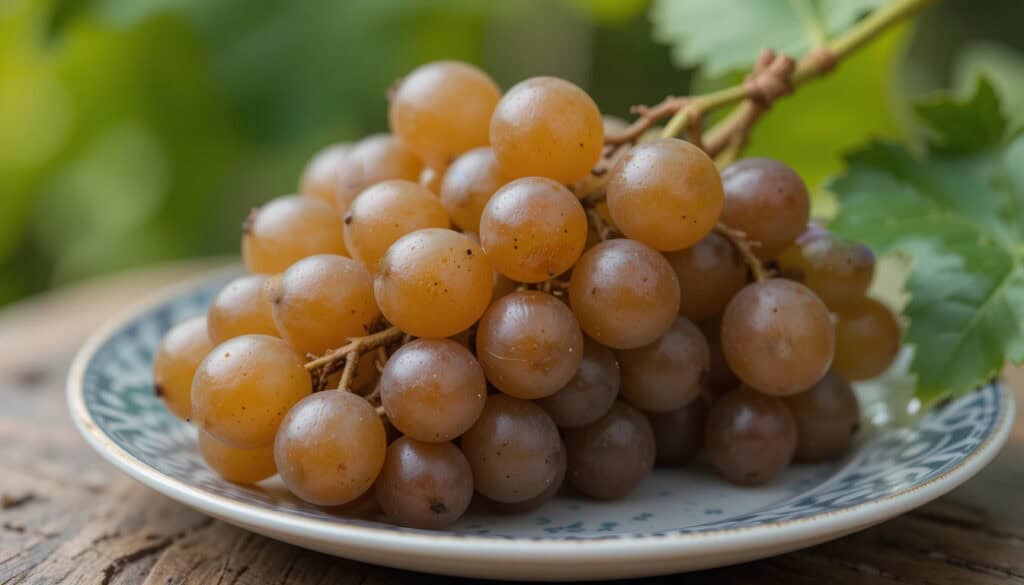
The relationship between Scuppernong grapes and Southern musical traditions reveals the profound connections between landscape, culture, and artistic expression. These indigenous vines, characterized by their seasonal patterns and sensory abundance, offered more than mere nourishment to generations of Southern communities. They offered inspiration, symbolism, and acoustic environments that shaped the development of musical forms that would eventually influence American culture far beyond their geographic origins.
Through eight distinct pathways of influence, Scuppernong grapes wove themselves into the fabric of Southern musical heritage. From the rhythmic patterns established in plantation work songs to the intimate acoustic environments of porch gatherings, from the symbolic meanings embedded in storytelling ballads to the physical techniques that connected agricultural labor with instrumental mastery, these remarkable grapes participated in the creation of musical traditions of lasting significance.
The sensory memory triggered by Scuppernong’s distinctive taste and aroma provided emotional anchors that preserved cultural knowledge across generations of social change. The seasonal abundance that supported community festivals created opportunities for musical development and cultural exchange that enriched regional traditions. The environmental acoustics of vine-covered landscapes influenced vocal techniques and instrumental approaches that became defining characteristics of Southern musical identity.
Table 11: Scuppernong Grapes Compared to Other Fruits
| Characteristic | Scuppernong | Mango | Apple | Kumquat | Common Orange | Lemon | Lime | Blood Orange |
|---|---|---|---|---|---|---|---|---|
| Origin | Southeastern USA | South Asia | Central Asia | East Asia | Mediterranean | Mediterranean | Southeast Asia | Mediterranean |
| Climate Tolerance | High heat/humidity | Tropical | Temperate | Subtropical | Mediterranean | Mediterranean | Tropical | Mediterranean |
| Cultural Significance | Deep Southern roots | Tropical luxury | Universal appeal | Asian tradition | Western staple | Culinary essential | Tropical flavor | Gourmet specialty |
| Harvest Season | Late summer | Year-round | Fall | Winter | Winter | Year-round | Year-round | Winter |
| Preservation Methods | Wine, preserves | Dried, pickled | Dried, canned | Candied, preserved | Juice, dried | Juice, preserved | Juice, preserved | Juice, marmalade |
| Musical Associations | Blues, folk tradition | Tropical music | Folk songs | Limited | Limited | Jazz references | Caribbean music | Limited |
| Symbolic Meaning | Heritage, belonging | Exotic abundance | Knowledge, health | Prosperity, luck | Sunshine, health | Cleansing, sharp wit | Freshness, vitality | Passion, mystery |
| Sensory Memory Impact | High nostalgic value | Tropical memories | Childhood comfort | Unique flavor memory | Fresh, clean memory | Sharp taste memory | Bright flavor memory | Rich taste memory |
The story of Scuppernong grapes and Southern music demonstrates how cultural traditions emerge from the intimate relationship between communities and their natural environments. These connections, forged through generations of shared experience, create artistic expressions that carry the essence of place, season, and collective memory. The musical traditions that developed in Scuppernong-rich environments continue to influence contemporary artists and audiences, testament to the enduring power of cultural forms rooted in authentic environmental and social experience.
Understanding these connections enriches our appreciation for both the natural heritage and the cultural achievements of the American South. The Scuppernong grape serves as a vibrant representation of the way human ingenuity interacts with and alters the natural resources offered by the environment, producing art that encapsulates and maintains the fundamental essence of time, location, and society. In the symphony of Southern culture, the Scuppernong provides both sustenance and inspiration, a sweet note that continues to resonate across generations of musical expression.




